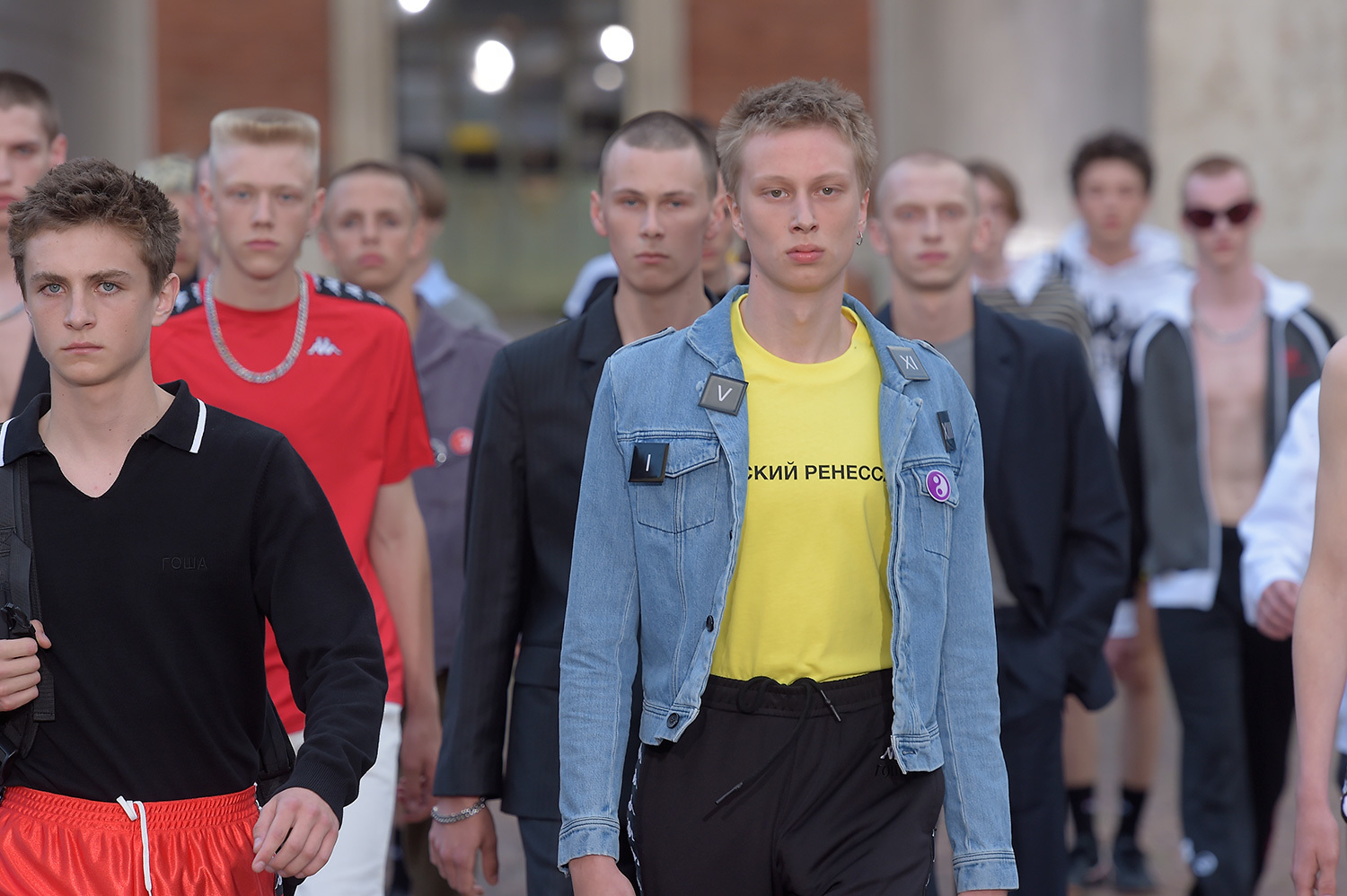In the land of contrasts that is Italy, you sometimes forget this country used to be ruled by a fascist regime. That’s why news that Gosha Rubchinskiy would show in Florence for Pitti Immagine this season was difficult to wrap your head around at first. What would the young Russian designer, with all his Iron Curtain nostalgia and 90s Moscow underground tendencies, do in the city of Da Vinci and Michelangelo? Arriving at his chosen show venue on Wednesday evening — an abandoned Mussolini-era tobacco factory — it all made sense. “I found a Gosha space here in Florence. We made a photo book here, a video and a collection, so I feel like this old tobacco factory is home. A piece of Russia, or a piece of Gosha, inside Florence,” he said after the show, which remained loyal to his trademark take on the normcore of post-Soviet Union Russia in the early 90s — Russian mullets and buzz cuts in tow. “There were similar things happening in Russia, Italy, and Germany. That’s why we still have the same kind of buildings in Russia,” he noted, referring to the communist, Nazi and fascist systems of the 30s and 40s, and the divided Europe they left in their wake. “When I first came here I felt like home. Something comfortable for my eyes and my spirit. But at the same time it’s about paying attention to how it was in the time of fascism. You need to remember your history.”
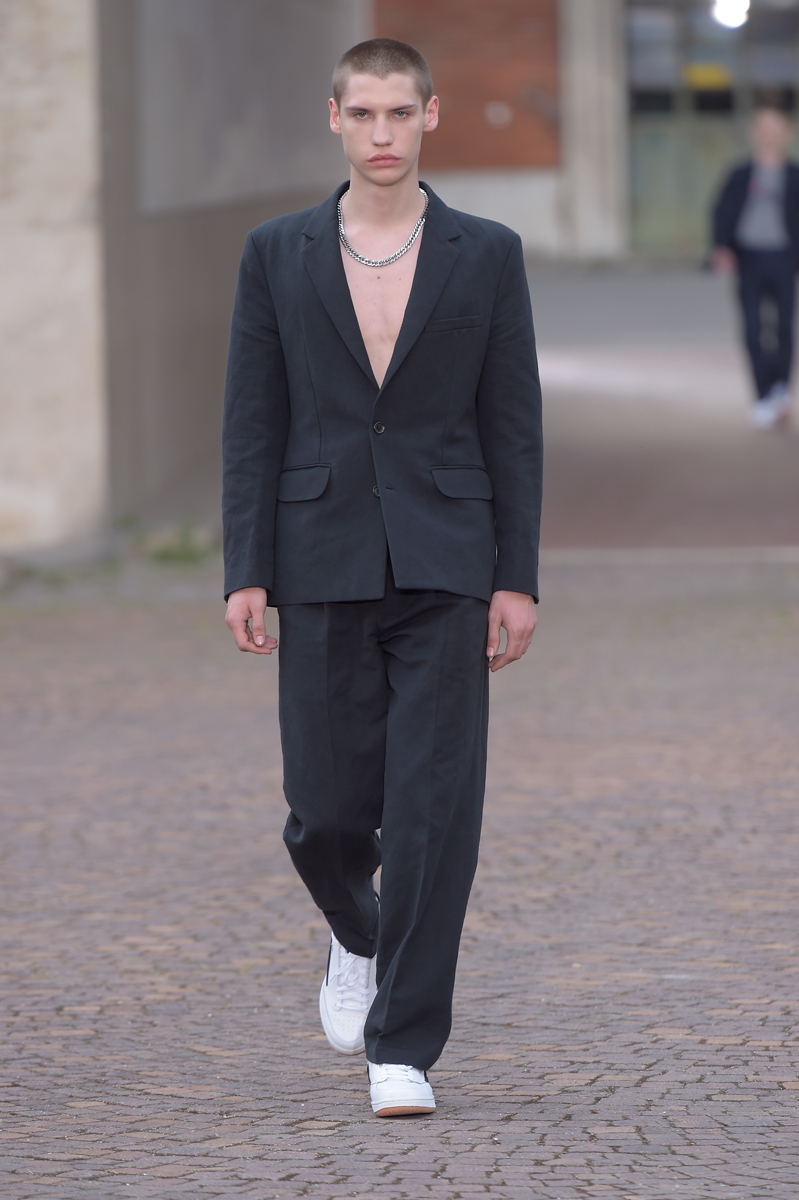
It’s been a debate in the fashion industry since the Eastern Bloc wave first washed over us some two years ago, much to the credit of stylist Lotta Volkova — herself a child of the Soviet Union — who works with Gosha Rubchinskiy and Vetements’ Demna Gvasalia, both of whom grew up behind the Iron Curtain. Is it nostalgia, romanticizing a dictatorial communist regime? “It’s an aesthetic,” Rubchinskiy asserted backstage. In his newest take on the street style of post-Soviet Moscow, he’d collaborated with Levis as well as five Italian sportswear brands including Fila and Kappa, which practically made up the uniform for any self-respecting Eastern European kid after the Wall came down in 1989 and the former Soviet Union was flooded with brand culture. “I don’t want to answer. I only pose a question. I ask, what is Europe now? What is Italy now? What is Russia now? It’s the same reason why Pasolini did his iconic Salò movie,” he said in reference to the controversial communist Italian filmmaker, who was killed for said film in 1975. “It’s ideas on the map and I’ll only pay attention to what’s happening now — what’s in the air. People can decide what they like and don’t like. I only ask questions.”
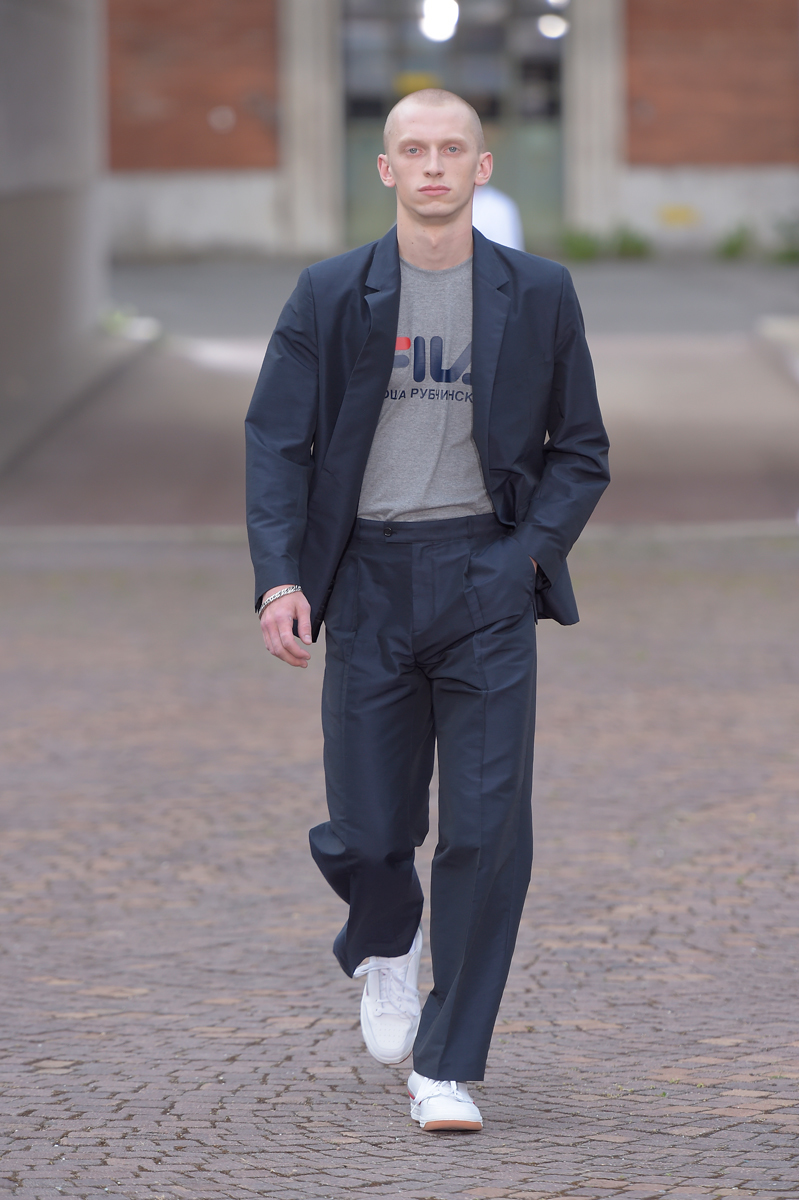
What he meant was of course the increasing tension rising in the Western political landscape where factors such as terror, wars, and refugees have contributed to a social spirit reminiscent of that of Europe in the depressed 30s when both the left and right wings grew stronger — something that’s also paved the way for the rise of Donald Trump in America right now. “It’s only about now. It’s all about the moment. My reflection of the moment. Every crazy idea from the twentieth century is starting to become popular again, and we need to think about it,” Rubchinskiy said. As his cast of 15-year-old baby-faced boys would suggest, he is the designer for a new generation of largely European kids of the Instagram culture, who weren’t even born in the 90s but for whom the dark and not-so-far-away history of Europe is a point of fascination. As their leader, Rubchinskiy is also their educator, and as Wednesday’s show proved there’s more to his aesthetics than fetishized nostalgia. For Fausto Puglisi, whose Italian pizzazz couldn’t be further removed from Rubchinskiy’s universe, the contrasts of Italy played as big a part. He debuted his menswear collection on a cast of burly Florentine rugby players and (very recent) former inmates covered in tattoos.
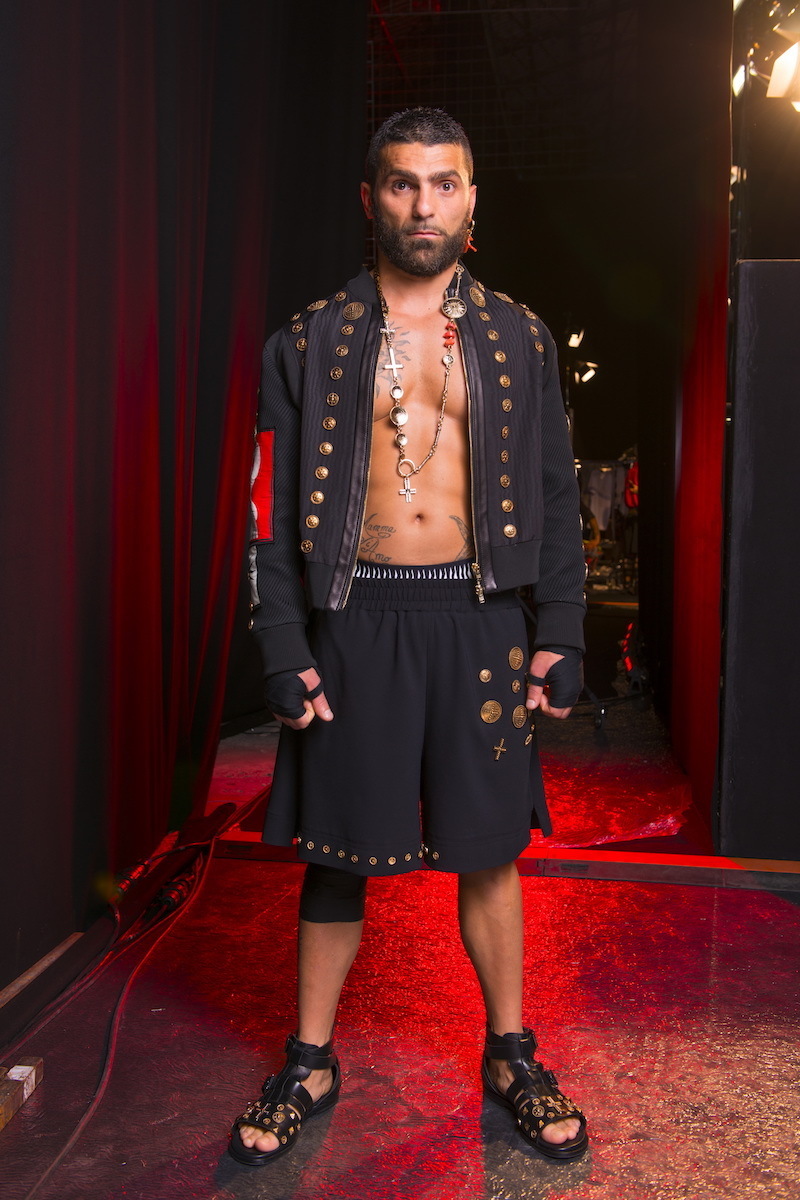
“It’s free, it’s romantic. You can find this man in Naples or in Palermo, where I’m from. They’re dreamers, they’re not fashionistas. They just put together what they like,” Puglisi said, watching the static presentation. It was so familiar, yet — to a Northern European — so very distant: tropical shirts, a leather bomber embellished with badges, floral shorts over ripped jeans, and long golden necklaces. It was an Italian street aesthetic, which might as well have been South American, and which is so recognizable from film and fashion that reassurance of its continuous existence gives you a certain sense of calm. “When I was a kid, it was the Versace momentum. He was the designer for all the kids. It influenced a generation. It’s a tribute first of all to this kind of philosophy — I’m very honest, I’m not afraid to say that. But at the same time that philosophy really comes from the streets of the south of Italy. Maybe people who haven’t lived there don’t understand it, but it’s part of our DNA,” Puglisi said, and through the power of Italian fashion, forever the property of the universal fashion realm.
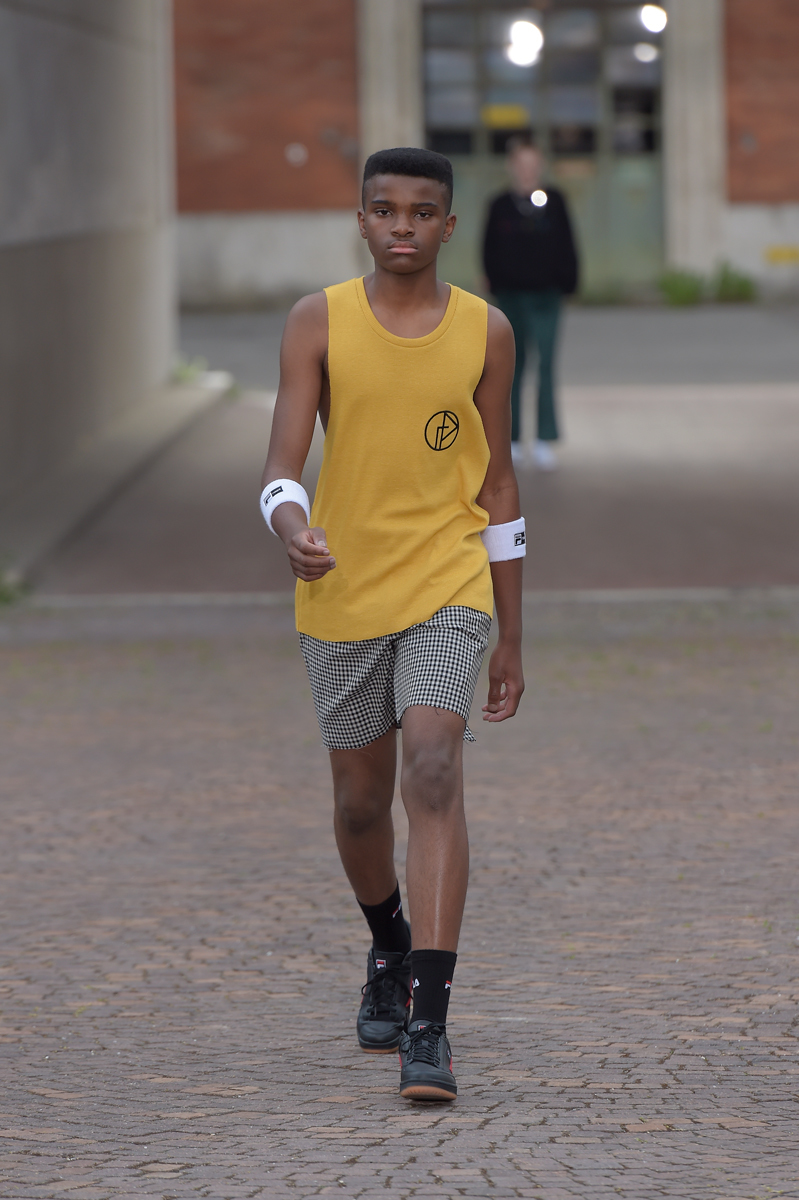
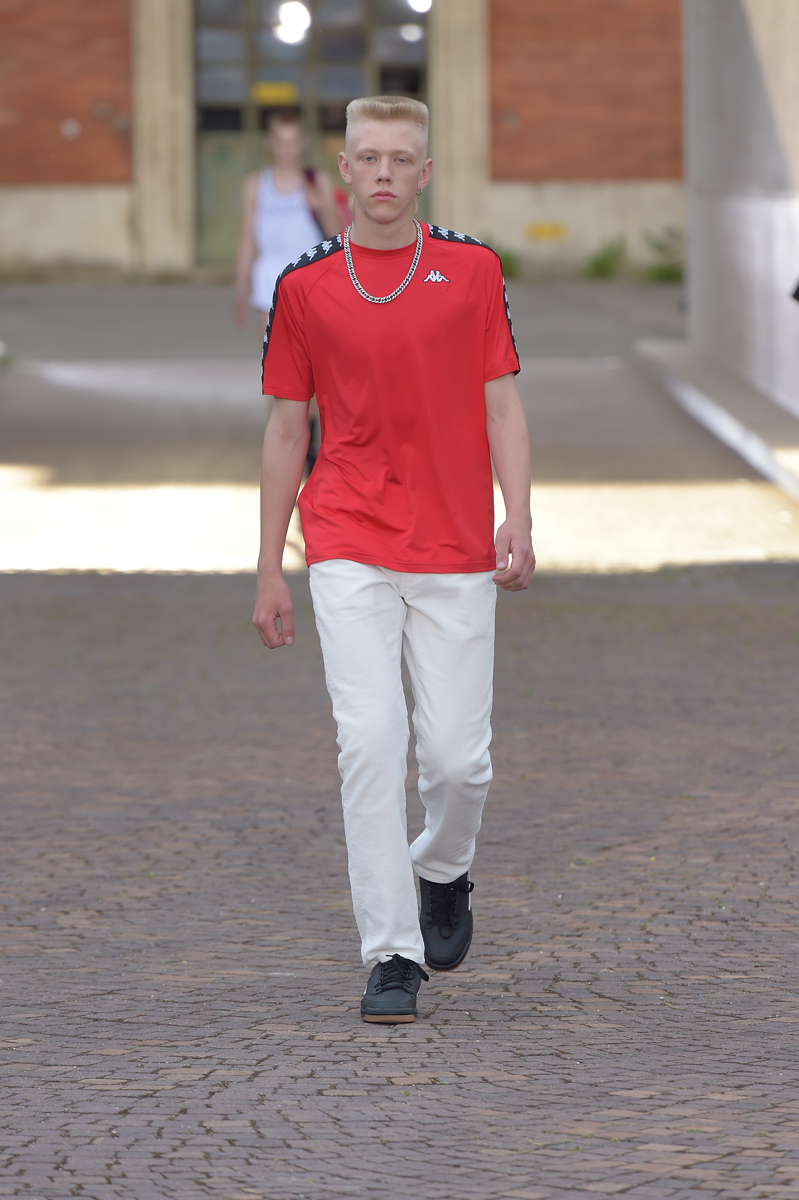
Gosha Rubchinskiy spring/summer 17
Credits
Text Anders Christian Madsen
